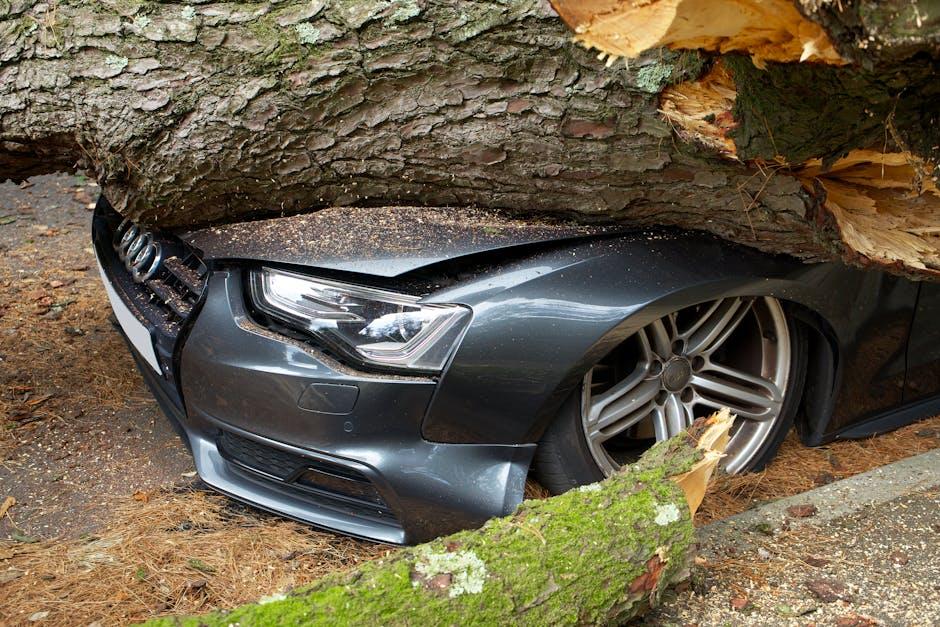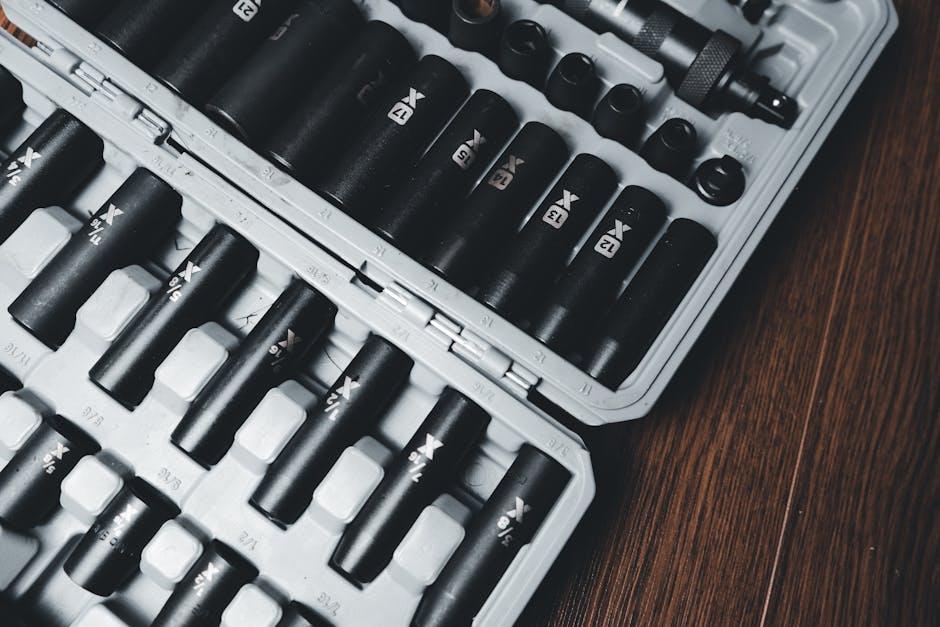Imagine this: You hop into your car, turn the key, and suddenly, the headlights don’t flicker on, or the radio is unusually silent. More often than not, the culprit behind these sudden electrical hiccups is a tiny yet mighty hero — the car fuse. These small components play a crucial role in protecting your vehicle’s electrical system, but when a fuse blows, it can bring certain functions to a halt. Knowing how to replace a car’s fuse not only saves you time and money but also empowers you to handle minor car troubles with confidence. In this guide, we’ll walk you through the straightforward steps to identify, remove, and replace a blown fuse, helping you get back on the road smoothly and safely.
Table of Contents
- Understanding the Role of Fuses in Your Vehicle’s Electrical System
- Identifying Common Signs of a Blown Car Fuse
- Gathering the Essential Tools and Safety Precautions
- Locating the Fuse Box and Reading the Fuse Diagram
- Step by Step Guide to Removing and Inspecting a Fuse
- Choosing the Right Replacement Fuse and Reinstalling It
- Testing Your Car’s Electrical Components After Fuse Replacement
- Q&A
- Closing Remarks

Understanding the Role of Fuses in Your Vehicle’s Electrical System
Fuses act as silent guardians woven into the intricate circuitry of your vehicle, designed to protect vital electrical components from damage caused by overloads or short circuits. Think of them as tiny, yet powerful safety valves that interrupt the electrical flow when the current exceeds safe levels. Without these crucial protectors, key parts like your headlights, radio, or engine control units could suffer irreversible harm, leading to expensive repairs and unexpected breakdowns.
Here’s why fuses are indispensable in your car’s electrical system:
- Prevent electrical fires: By breaking the circuit instantly during surges.
- Protect sensitive electronics: Ensuring devices receive proper current without damage.
- Enable easy diagnostics: Helping pinpoint faults quickly by identifying blown fuses.
| Fuse Rating | Common Usage | Max Current (Amps) |
|---|---|---|
| 5A | Interior Lights, Sensors | 5 |
| 10A | Radio, Dashboard Instruments | 10 |
| 20A | Power Windows, Seat Heaters | 20 |
| 30A | Cooling Fans, Wipers | 30 |

Identifying Common Signs of a Blown Car Fuse
When your vehicle starts exhibiting electrical issues, such as malfunctioning dashboard lights or unresponsive power windows, it often signals a potential fuse problem. A fuse acts as a safeguard for your car’s electrical circuits, and when overloaded, it will blow to prevent serious damage. One common visual cue is a disconnected or broken filament inside the fuse, visible through the transparent casing. Additionally, you might notice a burnt or blackened appearance around the fuse base, indicating it has blown. Ignoring these signs can lead to further electrical complications, so it’s important to be proactive in spotting them early.
- Electrical components not working: Blown fuses can cause headlights, radio, or interior lights to stop functioning.
- Car won’t start: A faulty fuse related to the ignition system might prevent the engine from turning over.
- Unusual smells: A burnt odor near the fuse box often signals an overheated or damaged fuse.
| Symptom | Possible Fuse Issue |
|---|---|
| Dim or Flickering Lights | Loose or Partially Blown Fuse |
| Non-functional Power Accessories | Blown Fuse for Accessories Circuit |
| Car Fails to Start | Main Ignition Fuse Burnout |

Gathering the Essential Tools and Safety Precautions
Before diving into replacing a fuse, it’s crucial to assemble the right tools that will make the process smooth and hazard-free. At a minimum, you’ll need a fuse puller or needle-nose pliers, a replacement fuse matching your car’s specifications, and a multimeter if you want to test the fuse’s condition with precision. Have a flashlight handy for better visibility inside your fuse box, especially in dimly lit garages or nighttime repairs.
Equally important are the safety measures designed to prevent injury or further damage to your vehicle’s electrical system. Always start by turning off the engine and disconnecting the battery to avoid accidental electrical shorts. Wearing insulated gloves can provide an extra layer of protection, and working in a dry environment reduces the risk of electrical shocks. Keeping a basic fire extinguisher nearby is also a wise precaution, just in case a blown fuse sparks an unexpected flame.
| Essential Tools | Safety Tips |
|---|---|
| Fuse Puller or Pliers | Disconnect Battery First |
| Replacement Fuses | Wear Insulated Gloves |
| Multimeter | Work in Dry Area |
| Flashlight | Keep Fire Extinguisher Nearby |

Locating the Fuse Box and Reading the Fuse Diagram
The fuse box in your car is typically tucked away in less obvious spots to protect it from damage and dirt. Common locations include beneath the dashboard on the driver’s side, inside the glove compartment, or under the hood near the engine bay. To find it, consult your vehicle’s manual—it often points you straight to the fuse box without much hassle. Once located, you’ll usually find a cover that snaps on and off easily. This cover is more than just a protective shield; it often holds the fuse diagram that serves as your roadmap for identifying each fuse’s purpose and rating.
Reading the fuse diagram is crucial before attempting any replacements. This diagram uses symbols and labels to show which fuse powers specific car functions like lights, radio, or air conditioning. To make this easier, here’s a quick reference of typical fuse functions you might encounter:
- Radio: Prevents electrical surges to the audio system.
- Headlights: Controls front lighting circuits.
- Ignition: Powers the engine start-up process.
- Air Conditioning: Protects climate control components.
| Fuse Label | Function | Amperage |
|---|---|---|
| F1 | Headlights | 15A |
| F2 | Radio | 10A |
| F3 | Ignition | 25A |
| F4 | Air Conditioning | 20A |
Taking a moment to understand this layout ensures you pick the right fuse to replace, preventing damage to other electrical components and saving you time during repairs.

Step by Step Guide to Removing and Inspecting a Fuse
Begin by locating your vehicle’s fuse box, often found under the dashboard or in the engine compartment. To safely remove a fuse, make sure the car is turned off and use a pair of fuse pullers or needle-nose pliers. Gently grasp the fuse along its plastic body and pull it straight out to avoid damaging the fuse socket. Take care not to twist or wiggle it excessively, as this can bend the contacts inside the fuse box. Place the removed fuse on a clean surface for inspection.
Now, examine the fuse for any signs of damage or failure. Focus on the thin metal strip inside the clear plastic casing. If the strip is broken, burnt, or discolored, the fuse has blown and needs replacement. For a quick reference, decode the fuse ratings using the chart below, which outlines common color codes and their corresponding amperage values:
| Color | Amperage (A) | Common Use |
|---|---|---|
| Red | 10 | Interior Lights |
| Blue | 15 | Radio / Accessories |
| Yellow | 20 | Power Windows |
| Green | 30 | Cooling Fan |

Choosing the Right Replacement Fuse and Reinstalling It
When replacing a fuse, selecting one with the exact amperage rating is crucial to avoid electrical mishaps. Check the fuse’s color and number markings carefully—these indicate its current rating and type. Using a fuse with a higher rating than recommended can lead to damage in your car’s electrical system, while a lower-rated fuse may blow prematurely. Consult your vehicle’s manual or the fuse box cover for specifications, and consider keeping a handy fuse amp chart on file for reference.
Once you have the correct replacement, gently insert the fuse into the designated slot, ensuring it fits snugly without forcing it in. Use a fuse puller or needle-nose pliers for safe handling, and double-check the position before securing everything back in place. After reinstalling, turn on your vehicle and test the circuit to confirm everything functions correctly. If the new fuse blows immediately, further electrical diagnosis may be necessary.
| Fuse Color | Amperage | Common Use |
|---|---|---|
| Red | 10A | Interior lights |
| Blue | 15A | Radio, accessory sockets |
| Yellow | 20A | Power windows, seats |

Testing Your Car’s Electrical Components After Fuse Replacement
Once the fuse is replaced, it’s essential to verify that all related electrical systems are functioning properly. Start by turning on the ignition without starting the engine and closely observe components like the dashboard lights, radio, and power windows. Check for any flickering lights or unresponsive devices, which could indicate that the fuse replacement didn’t fully restore circuit integrity. Additionally, testing the specific function that was previously malfunctioning ensures you’ve targeted the right fuse.
To streamline troubleshooting, consider the following quick tests:
- Use a Multimeter: Set it to check continuity across the fuse terminals— a steady beep confirms a good fuse.
- Test Switches and Controls: Operate buttons or knobs linked to the fuse to spot inconsistent behavior.
- Look for Physical Signs: Check for burnt smells or visible wire damage that might signal further electrical issues.
| Component | Expected Behavior | Troubleshooting Tip |
|---|---|---|
| Dashboard Lights | Steady illumination when ignition is ON | Check fuse contact and wiring |
| Power Windows | Smooth operation without delay | Test window switches and motor |
| Radio | Clear audio with proper power-up | Verify fuse orientation and socket condition |
Q&A
Q: What is a car fuse and why is it important?
A: A car fuse is a small protective device designed to prevent electrical circuits from overloading and causing damage. It acts like a safety valve, breaking the circuit if too much current flows through, protecting your car’s wiring and components from potential hazards.
Q: How do I know if a fuse in my car needs replacing?
A: Signs of a blown fuse often include electrical components not working—like your radio, headlights, or power windows. You might also notice a faint burning smell or see a broken wire inside the fuse when you inspect it. Some cars have a fuse warning light on the dashboard as well.
Q: Where can I find the fuse box in my car?
A: Most cars have two fuse boxes: one under the hood and another inside the cabin, usually beneath the dashboard or near the glove compartment. Your owner’s manual is the best guide for exact locations and fuse box diagrams.
Q: What tools do I need to replace a car fuse?
A: Replacing a car fuse requires minimal tools — often just your hands. However, a fuse puller or a pair of needle-nose pliers can make the process easier. Having a multimeter on hand helps to test the fuse if you’re uncertain.
Q: How do I safely replace a fuse?
A: Start by turning off your car and removing the key. Locate the faulty fuse using the fuse diagram, gently pull it out with a fuse puller or pliers, and then insert a new fuse of the exact same amperage rating. Never swap in a fuse with a higher rating — this can cause serious electrical damage.
Q: Can I reuse a blown fuse?
A: No, once a fuse blows, it’s designed to be replaced. Reusing a blown fuse or replacing it with foil or other materials is unsafe and can lead to electrical fires or damage to your vehicle.
Q: What type of replacement fuse should I use?
A: Always use a fuse with the same amperage rating and type as the original. If unsure, consult your car’s manual or an auto parts professional to avoid mismatched fuses.
Q: What should I do if the new fuse blows immediately?
A: If the replacement fuse blows right away, it indicates a deeper electrical issue like a short circuit. It’s best to have your vehicle inspected by a qualified mechanic to diagnose and fix the problem before further damage occurs.
Q: How often should I check my car’s fuses?
A: There’s no fixed schedule, but it’s a good habit to inspect fuses if you notice electrical malfunctions or during regular vehicle maintenance. Checking them occasionally ensures your car’s electrical system stays healthy.
Q: Is replacing a car fuse something anyone can do?
A: Yes! Replacing a fuse is typically straightforward and safe for most car owners, but if you’re uncomfortable or unsure, don’t hesitate to seek professional help. Safety first!
Closing Remarks
Replacing a car’s fuse might feel like a small fix, but it’s a crucial step in keeping your vehicle’s electrical system healthy and your drives worry-free. With a little know-how and a bit of patience, you can easily tackle this task yourself and save time — and maybe even a tow bill. So next time a fuse blows, don’t panic. Instead, channel your inner mechanic, follow these simple steps, and get back on the road with confidence. Remember, every tiny fuse plays a role in the symphony of your car’s functions—keep them all in tune, and your journey will be smooth and safe.

